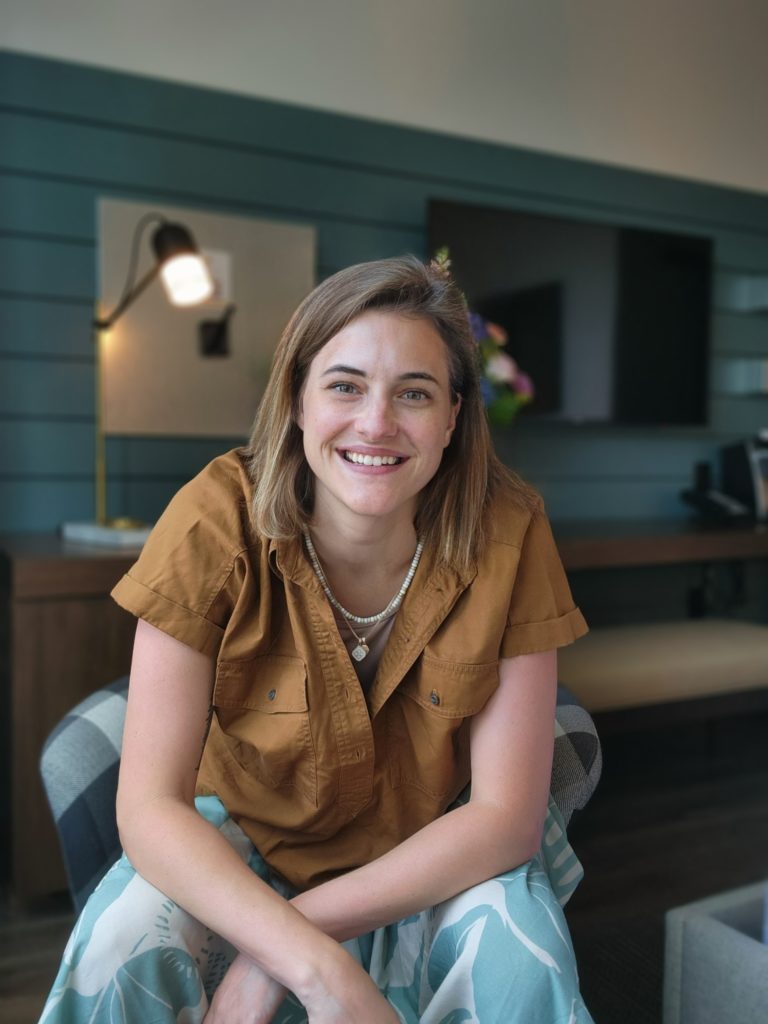The right technology can change everything for clinicians. It can mean fewer late-night notes, more time with clients, and less burnout. But none of that matters if you can’t get your team to use it.
In our latest episode of the No Notes podcast, Dr. Denny Morrison chatted with Christina Stewart, Training Lead at Eleos, and Kate Benedetto, Customer Insights Manager at Eleos and former Enterprise Applications Manager at Clinica Family Health & Wellness, about what it really takes to introduce AI into the daily practice of therapists on the front lines of care.
From handling skepticism to helping providers see the benefits of purpose-built AI for themselves, their conversation dug into what works, what doesn’t, and why successful implementation is less about the tech and more about the people.
Want to hear the whole conversation? Listen to the full podcast episode here.
Why AI Implementation is Different From Other Tech Rollouts
For many clinicians, the idea of a new tech tool comes with baggage. As Benedetto put it, rolling out a platform like Eleos means dealing with initial reactions like, “Oh no—they’re giving us another thing that we have to learn.” The resistance isn’t about the tech itself, but more about the experience providers have had with tools that ended up adding work instead of easing it.
Their skepticism makes sense. Many tech vendors ask providers to change their workflows without giving much in return. Even when the tool promises big-picture improvements, the day-to-day experience—especially at the user level—can feel burdensome.
That’s part of what makes implementing AI tools different. The technology itself is new and unfamiliar, which raises its own set of questions. But it’s also one of the first tools designed to help with the actual work of therapy—rather than behind-the-scenes functions like scheduling or billing.
The challenge is getting that across to reluctant providers. But before teams can see and appreciate the benefits, they need space to figure out what the tool does, what it doesn’t, and how it fits into their day.
Get an expert-built blueprint for a successful AI rollout. Download our Complete Guide to Behavioral Health AI Implementation now.
Common Questions, Misconceptions, and Fears About AI
As Benedetto noted, “There are so many questions. There are so many things to think about, and how do you know what questions to ask…because you don’t know what to expect from something like AI.”
Benedetto and Stewart had plenty of examples they’ve heard from providers over the years—and not all of them have easy answers. Some concerns come from a place of unfamiliarity, others from past experience, and some from a deep understanding of the risks. And to address them all effectively, Stewart said, “You have to go into the training from a place of empathy.”
Here are some of the most common misconceptions and fears they’ve encountered:
“Are you looking to replace me?”
This is one of the toughest questions Stewart hears during trainings—and it comes up more often than you might think. “That’s never our goal,” she said. “The ultimate goal is to make your lives easier and to prevent providers from burning out.”
“Do they even understand our work?”
Some clinicians worry that vendors don’t “get” what behavioral health providers actually do day-to-day. But Stewart stressed that Eleos designs provider training with real-world workflows in mind: “We know what case managers do. We know what therapists do. We know what a peer support person does.”
“I don’t know anything about AI. Should I be worried?”
The uncertainty around AI can be intimidating. Stewart said some users are hesitant simply because they don’t know what to expect. That’s why Eleos surveys providers before training sessions to get a sense of how they’re feeling about the rollout and what questions they have. That way, the training team can address those concerns head-on. “If you dodge anything, people feel that,” she said.
“Is my data secure?”
Tech-savvy users often want details about data protection: “They want to know if everything is encrypted on the way up and on the way down,” Stewart explained. Benedetto also noted that questions about data storage and usage came up frequently during AI implementation at Clinica Family Health & Wellness. (And of course, with Eleos, the answer is always “yes”—learn more about our privacy and security safeguards here.)
Digging into Privacy and Security Concerns
Speaking of security: When you’re introducing AI into a behavioral health setting, the toughest questions aren’t always about how the technology works. Often, they’re about what it means for clients, clinicians, and clinical care.
“There were a lot of questions around data privacy,” Benedetto said, reflecting on the early weeks of AI implementation at Clinica. “Where is the data going? Is this safe? What do I tell my clients?”
The concerns weren’t abstract. Staff wanted specifics—they wanted to be able to explain how client data was being handled and why the tool could be trusted.
They also wanted to know where compliance fit in. “Do we need people to sign something for this? Do we need to have clients sign a release?” she recalled being asked. “Where does that factor in, and how do we monitor it?”
The good news is these questions have answers. HIPAA compliance is baked into the system design at Eleos, and the documentation process remains fully under the provider’s control.
Additionally, the training team at Eleos goes well beyond simply teaching providers how to use the tool. Even the seemingly small details, like how to introduce the tool in-session, are covered. “We actually train clinicians on how to talk about this,” Morrison explained.
Need a crash-course on how AI works in behavioral health? Listen to our AI 101 podcast episode now.
Real Provider Reactions After Actually Using AI
Even the most skeptical clinicians can become vocal supporters once they’ve used AI tools in real sessions and seen the benefits for themselves.
Benedetto recalled a story from the first training session at Clinica:
“I had [a] person who sent me an email about a week later saying, ‘Kate, I was so skeptical…I didn’t want to use this. I went into this with the mindset that I’m not gonna like this…Please don’t ever take this away from me.’”
Stewart had a similar moment when she revisited a particular facility six months after their Eleos training. A therapist pulled her aside to share how the tool helped them recognize their own strengths:
“Every time I use the little note taker, it reminds me of something that I did in-session that I didn’t even remember. I don’t give myself credit for all of these things that I really should be giving myself credit for,” Stewart said, recalling the provider’s words.
When speaking to providers about the benefits of an AI tool, Stewart said it helps to focus less on the time savings, and more on what becomes possible with that time savings.
“You don’t necessarily make the connection to the long-term benefits until you see it,” Stewart said. “It’s the difference between watching Netflix while writing notes at night, and actually watching Netflix.”
What Leadership Gets Right (or Wrong) During an AI Implementation
When AI implementation goes sideways, it’s often not because of the technology, but because of poor change management.
“There have been times where we’ve shown up on site and providers didn’t even know what kind of training they were coming into,” Stewart said. “They didn’t know it was an AI software. They didn’t know that it was gonna help them take notes. And we’re already behind at that point.”
Benedetto added that in addition to dedicating plenty of time and space to communication, leaders should be mindful of how they communicate. “Words matter, and words have impact,” she said. “It is entirely about how you as leadership are framing this to your staff.” She said using language that “creates anxiety or creates chaos” can undermine the whole process.
Setting expectations is also critical. “Did you clearly define what problem you are trying to solve by implementing this piece of technology?” Benedetto added. “If you say it’s problem A and the solution’s gonna deliver on expectation F, there is a huge misalignment.”
Leadership presence during the actual training, even briefly, makes a difference, too.
“I think it’s really helpful if the CEO is present for that first kickoff,” Morrison noted. “Their presence says a lot. And they don’t have to be there for the whole thing—but it’s one of those intangible benefits of what leadership can do without saying a word.”
Where AI Is Headed in Behavioral Health
Both Benedetto and Stewart agree that AI isn’t going anywhere. And in behavioral health, that presents both a challenge and an opportunity.
Regulations are shifting quickly. New policies at the state and federal level are forcing organizations to rethink how they manage staffing, documentation, and care delivery. For Benedetto, that means it’s time to get strategic with limited resources. “Let clinicians do what only they can do,” she said. “Let AI handle the rest.”
She said embracing AI isn’t just about helping current operations run smoother and more efficiently. It’s also about preparing your organization for a future where the gaps in resourcing are bigger. AI can help ease the pressure on overwhelmed teams—especially when it comes to administrative tasks that take providers away from client care—so that more people can get the care they need, despite staffing shortages and other constraints.
“I think part of the reason it’s so interesting right now is we are in such unprecedented times when it comes to behavioral health,” Benedetto said. “There is a rapid rate of change happening at a federal administration level, and the impacts are kind of coming from every single angle.”
Ready to set your behavioral health organization up for success in 2025 and beyond? Request a demo of Eleos to see how purpose-built AI can help you face evolving challenges with confidence.

